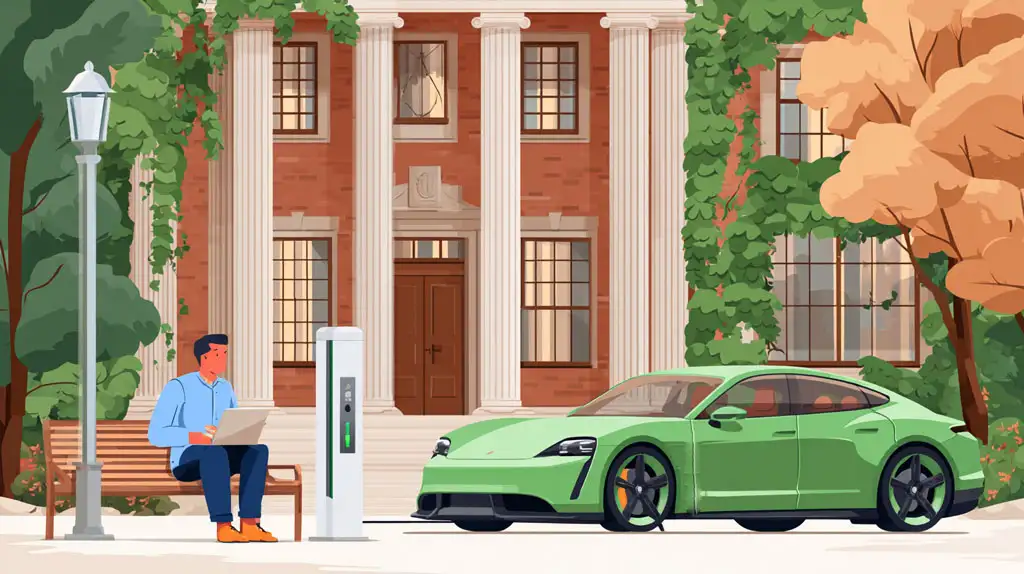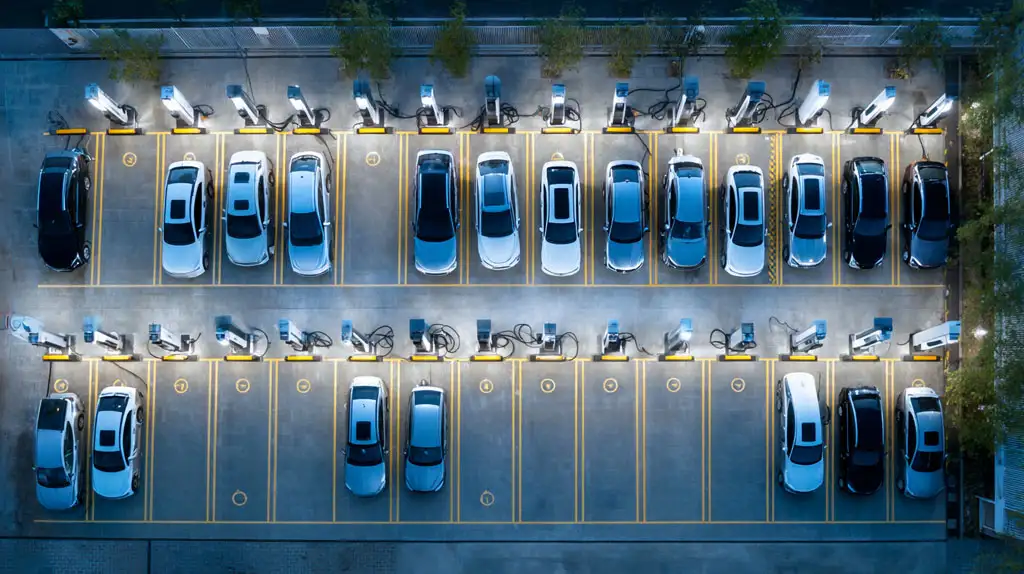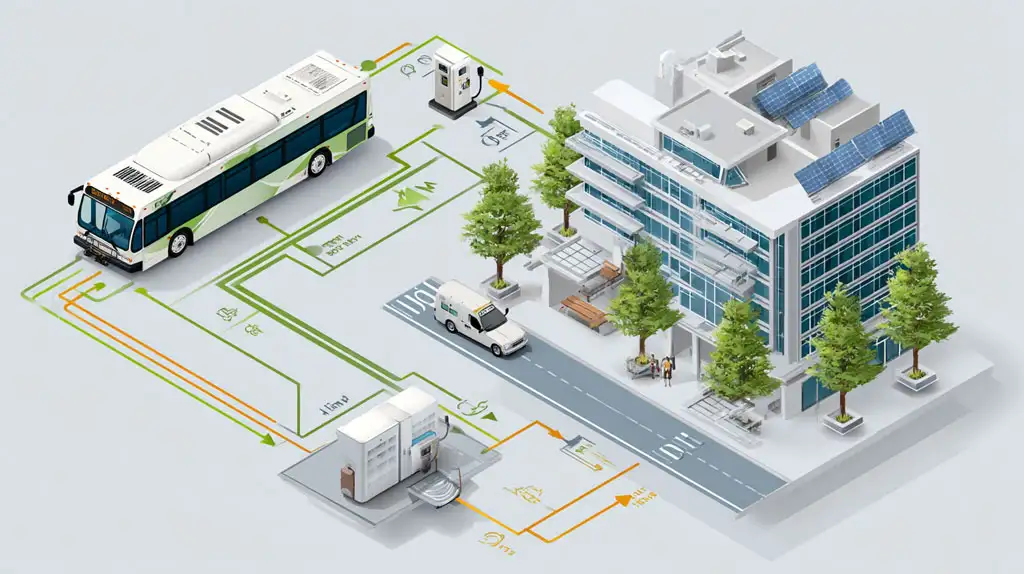How can your university leverage EV Charging Station for University to gain a decisive competitive edge? The answer lies in transforming this technology from a simple amenity into a strategic asset that attracts top talent, meets ambitious sustainability goals, and opens up new revenue streams.
This guide provides a direct action plan for university. It will teach you step-by-step how to secure funding, choose future-proof technology, and build a profitable charging network that will define your campus for the next decade.
Top universities recognize that a robust university EV charging infrastructure is essential. It delivers powerful benefits that go far beyond simple convenience. Investing in this technology gives your institution a significant competitive edge.
Today’s students and faculty are environmentally conscious. They actively seek out institutions that share their values. Offering reliable campus EV chargers sends a clear message: your university is committed to a sustainable future. This can be a deciding factor for top applicants and world-class professors choosing where to study and work.
Every university has sustainability targets, often called ESG (Environmental, Social, and Governance) goals. EV charging is one of the most visible ways to demonstrate this commitment. Each charging session directly contributes to reducing your campus’s carbon footprint. This provides powerful data for your annual reports and marketing materials, boosting your green reputation.
With the right strategy, campus EV chargers can become a new source of income. You can set flexible pricing for different user groups like students, faculty, and public visitors. Smart charging software allows you to manage this easily. This turns a necessary expense into a self-sustaining, and even profitable, operation.
Installing modern EV charging stations positions your university as an innovator. It shows you are adapting to new technologies and leading the way in your community. This positive image attracts media attention, community partnerships, and strengthens your brand as a whole.

Implementing a campus-wide charging network may seem complex. However, by breaking it down into manageable steps, the process becomes clear and straightforward. Follow this playbook for a smooth rollout.
Success starts with the right people. Your team should include representatives from key departments:
Facilities Management: To handle site assessment and electrical infrastructure.
Finance & Administration: To oversee budget, funding, and ROI analysis.
Sustainability Office: To align the project with campus green initiatives.
IT Department: To manage network connectivity and software integration.
Student and Faculty Representatives: To provide user perspective and feedback.
Before you buy a single charger, you need data. Don’t guess—assess.
Survey Your Community: Send out a simple survey to students, faculty, and staff. Ask who currently owns an EV and who plans to buy one in the next 2-3 years.
Identify Key Locations: Where is demand highest? Consider parking garages near libraries, dormitories, administrative buildings, and athletic centers.
Analyze User Patterns: Students who live on campus may need overnight Level 2 charging stations. Commuters and visitors might need faster DC fast charging options.
A thoughtful layout is critical for user convenience and cost-efficiency.
Visibility and Accessibility: Place chargers in well-lit, easy-to-find locations. Ensure they comply with accessibility standards.
Electrical Capacity: Work with your facilities team to assess the power capacity at potential sites. Grouping chargers can often reduce installation costs.
Scalability: Think about the future. Your EV Charging Station Design should allow for easy expansion as demand grows. Choose locations where you can add more chargers later without major rework.
| Cost Category | Description | Revenue/Savings Category | Description |
|---|---|---|---|
| Hardware Costs | Cost of the Electric Vehicle Supply Equipment (EVSE) itself | Direct Charging Fees | Revenue from users paying to charge their vehicles |
| Installation Costs | Electrical work, trenching, signage, and labor | Parking Premiums | Charging for premium parking spots equipped with EV chargers |
| Software Fees | Annual or monthly fees for the charging management platform | Energy Cost Savings | Using smart charging to avoid peak demand charges from your utility |
| Maintenance | Ongoing service contracts and potential repairs | Increased Enrollment | Indirect financial benefit from attracting more students |

The technology you choose today will impact your campus for the next decade. It’s crucial to select a flexible, reliable, and user-friendly solution.
You will likely need a mix of both types of chargers.
Level 2 Chargers: These are the workhorses of campus charging. They are perfect for locations where cars will be parked for several hours, such as dorms, faculty lots, and office buildings. They are more affordable and easier to install.
DC Fast Chargers (DCFC): These provide a rapid charge in under an hour. They are ideal for visitor parking lots or for commuters who need a quick top-up. They have higher hardware and installation costs.
The management software is just as important as the physical charger. A good platform allows you to:
Set Flexible Pricing: Create different price rules for students, faculty, and the public.
Manage Access: Control who can use certain chargers and when.
Monitor in Real-Time: See the status of all your chargers from a single dashboard.
Generate Reports: Track usage, revenue, and environmental impact.
Enable Smart Charging: Automatically adjust charging speeds to prevent overloading your electrical grid and reduce energy costs. This is a key feature of modern EV Charging Tech.
To serve everyone on campus, your chargers must be compatible.
Connectors: The most common charger connector types in North America are the J1772 (for Level 2) and the CCS (Combined Charging System) for DC fast charging. Tesla vehicles can use these with an adapter. Providing chargers with universal connectors is key.
OCPP (Open Charge Point Protocol): This is one of the most important EV Charging Standards. It ensures that your charging hardware can communicate with any OCPP-compliant software. This gives you the freedom to switch software providers in the future without having to replace your expensive hardware.
Learning from others is a smart strategy. Let’s look at how two different types of institutions successfully implemented their charging solutions.
A large state university needed to serve thousands of commuting students and residential staff. They adopted a phased approach.
Phase 1: They installed 50 Level 2 chargers in their main parking garages, funded by a federal grant and a utility rebate.
Phase 2: They added 4 DC fast chargers near the visitor center, using a revenue-sharing model with a Charge Point Operator.
Result: They now serve over 500 unique EV drivers per month and generate enough revenue to cover their operational costs.
A small liberal arts college had a limited budget but a strong commitment to sustainability.
Strategy: They partnered with a CaaS provider to install 10 Level 2 chargers with no upfront cost.
Location: They placed them in a central faculty and student lot to maximize usage.
Result: The project was cash-flow positive from the first month. It became a major talking point in their admissions materials, helping them attract environmentally-focused students.

The world of EVs is evolving rapidly. A smart investment today prepares you for the technology of tomorrow.
Vehicle-to-Grid (V2G): This groundbreaking technology will allow parked EVs to send power back to the campus grid during peak demand hours. This can dramatically lower the university’s electricity bills. Choosing V2G-ready hardware is a wise move.
Wireless Charging: While still emerging, wireless EV charging pads could one day become common. Planning your infrastructure with this in mind can save future costs.
Integration with Campus Apps: Imagine students finding and paying for charging directly through your university’s official mobile app. This seamless experience is the future of campus services.
Implementing EV charging solutions for universities is a strategic decision that pays dividends in talent attraction, sustainability, and brand reputation. By following a clear plan, assessing your true needs, and choosing flexible technology, you can build a successful and profitable charging network. The key is to see it not as an expense, but as an investment in your university’s future.
As you begin this journey, finding the right partner is crucial. For universities looking for a provider that balances cutting-edge technology with budget-friendly solutions, Linkpower offers products that are extremely cost-effective. Our solutions are designed to be reliable, scalable, and easy to manage, providing an exceptional return on investment. We invite you to contact us for a complimentary campus charging assessment to see how Linkpower can help you achieve your goals.
Authoritative Sources
U.S. Department of Energy: Alternative Fuels Data Center (AFDC) – https://afdc.energy.gov/fuels/electricity_infrastructure.html
ChargePoint: EV Charging for Universities – https://www.chargepoint.com/solutions/
The Open Charge Alliance (OCA): About OCPP – https://www.openchargealliance.org/protocols/ocpp/
CALeVIP: Funding for EV Charging Infrastructure in California – https://calevip.org/
Second Nature: Climate Leadership Network for Higher Education – https://secondnature.org/
EVgo: EV Charging for Business and Commercial Properties – https://www.evgo.com/business/
Rocky Mountain Institute: The Sooner We Charge, The Better – https://rmi.org/insight/ev-charging-for-all/
UC Davis: Plug-in Hybrid & Electric Vehicle Research Center – https://phev.ucdavis.edu/
我们将向您发送详细的技术信息和报价!